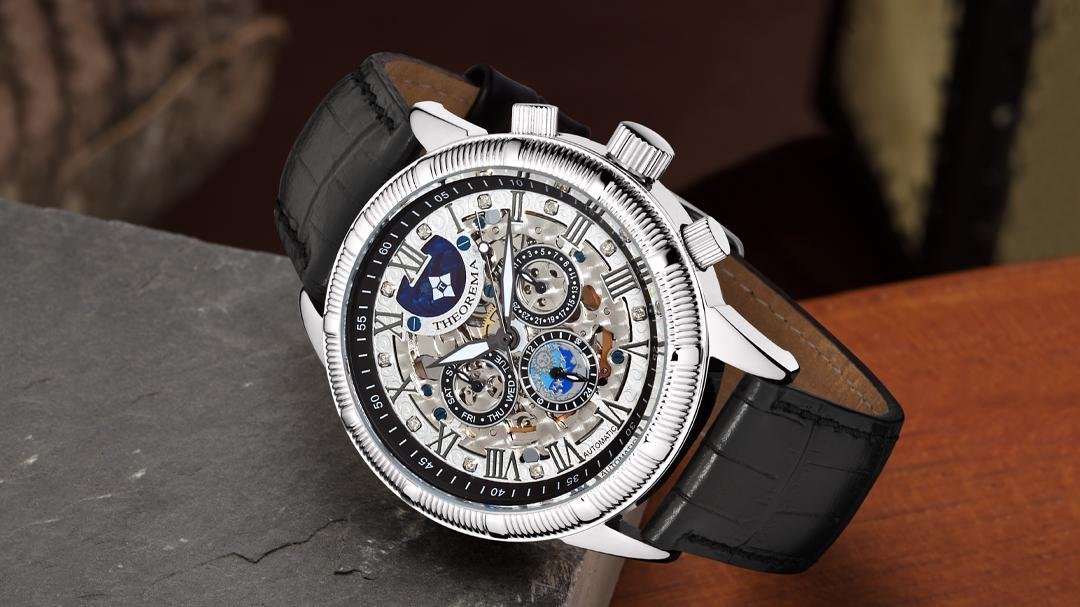Introduction
Tufina is a brand that markets itself at the intersection of family tradition and modern, affordable luxury watchmaking. With storytelling that traces the Tufina family’s horological roots back to the 19th century and a contemporary presence centered on Germany, the brand emphasizes hand-assembly, mechanical movements, and designs that nod to classic European styles. Whether you’re coming from the world of established haute-horlogerie or you’re a first-time buyer hunting for a mechanically interesting, visually striking piece, Tufina’s brochures and product pages present a consistent message: historic lineage, German production credentials, and a wide assortment of automatic and mechanical models across multiple collections. This article lays out the brand’s heritage claims, product families, construction and movement details, target buyer profile, and practical pros/cons so you can judge Tufina on both story and substance.
Heritage and Craftsmanship
Tufina presents itself as an independent, family-owned watchmaking name whose origins are woven into an 1800s narrative of traveling jewelers and clockmakers. The company emphasizes multi-generational involvement in timekeeping crafts and cites a founding lineage dating back to the early 1800s and formal family firm status from the 1820s onward. In the modern era the family repositioned its watch activities in Germany, and in 2004 the Tufina enterprise launched or licensed contemporary brands tied to its history (notably Theorema and Pionier) to bring handcrafted-style mechanical watches back to market. The brand repeatedly highlights hand-assembly and small-series production in Munich, framing its watches as German-made timepieces built with family know-how rather than mass-produced fashion watches. These heritage and craft claims are core to Tufina’s identity and are frequently used to justify the design choices, pricing, and guarantee terms that accompany their product listings. Readers should note the difference between historical family lore presented on brand pages and independent reviews when evaluating those claims.
Design & Collections
Tufina’s catalog spans a broad stylistic range from open-heart and skeletonized dials to chronographs, classic dress pieces, and larger “urban” watches. The brand organizes offerings into multiple collections with evocative city or cultural names (e.g., Milano, Vienna, San Francisco, Buenos Aires), each delivering a particular aesthetic emphasis: retro skeleton mechanics, layered dials, applied indices, or large diameters that follow current fashion. Many models feature visible balance wheels or exhibition casebacks to showcase mechanical motion, which appeals to buyers who like the visual drama of gears and escapements. Tufina also segments product pages by movement type (automatic, mechanical hand-wind, and tourbillon-style designs), case material, strap options, and price tiers frequently positioning several watches under a value-oriented price ceiling to attract aspirational buyers. The collections page demonstrates the brand’s strategy: deliver visually distinct, hand-assembled pieces across many variants to reach a wide customer base while keeping a recognizably “German” design language in some lines. If you value variety and eye-catching mechanics over ultra-high-end finishing, Tufina’s lineup is intentionally appealing.
Quality, Movements & Value Proposition
Tufina emphasizes hand-assembled production and “Made-in-Germany” claims on many model pages, and it offers mechanical (automatic and hand-wound) movements across its ranges some sourced from widely used, reliable movement manufacturers while others are presented as in-house assembly. The brand positions itself as offering the look and mechanical character of classic European watchmaking at more accessible price points, with features such as exhibition casebacks, sapphire or mineral crystals, and leather straps to reinforce perceived value. Warranty terms and clearly stated specifications (e.g., water resistance, movement type) further support purchase decisions for informed buyers. However, for collectors used to high horology, it’s important to weigh aesthetic presentation against finishing quality and the provenance of the movement: independent reviews and community feedback can help verify claims about in-house work versus sourced movements and the long-term robustness of components. Overall, Tufina’s value proposition is centered on delivering decorative mechanicality and traditional design cues at approachable prices, rather than competing with established Swiss luxury houses on finishing or resale value.
Who Is Tufina For?
Tufina is best suited for buyers who prioritize style, storytelling, and mechanical visibility more than collector-grade finishing or investment resale. If you enjoy watches for their visual mechanics skeleton dials, open-heart windows, big date displays, and exhibition casebacks and you want a distinctive, European-styled piece without the Swiss-luxury price tag, Tufina can be attractive. It also appeals to shoppers seeking a watch with a family-crafted narrative and German production claims, and to gift buyers who want a striking, conversation-starting timepiece. Conversely, seasoned collectors focused on movement provenance, micro-adjustment finishing, or long-term brand cachet might prefer to research more penetrating independent reviews and movement sourcing. In short: Tufina aims at style-conscious mechanical watch buyers and those entering mechanical watches for the first time, rather than strict haute-horlogerie purists. Assess your priorities (design vs. finishing vs. movement pedigree) before deciding.
Conclusion
Tufina markets an appealing blend of family heritage, German assembly claims, and varied mechanical designs that make it a compelling choice for buyers who want the drama of visible mechanics and a European aesthetic at approachable prices. Their narrative of long family involvement in timekeeping and their modern presence in Germany underpin the brand’s identity; their many collections offer options for different tastes while maintaining recognizable motifs. As with any aspirational brand, balance the story and the specs: read independent reviews, check for clear movement sourcing and warranty terms, and compare finishing details if those factors matter to you. If you want a statement mechanical watch with an emphasized heritage story and accessible pricing, Tufina is worth considering.
Frequently Asked Questions
Q: Where are Tufina watches made?
A: Tufina highlights hand-assembly and German production (Munich) for many lines, though movement sourcing details vary by model.
Q: Are Tufina watches mechanical or quartz?
A: The brand focuses heavily on mechanical offerings automatic and hand-wound though availability can include a range of movement types across different collections.
Q: Is Tufina a luxury brand?
A: Tufina positions itself as affordable luxury: stylistically luxurious and mechanically visible, but typically priced below traditional Swiss luxury houses.
Q: What warranty do they offer?
A: Product pages indicate warranty terms (commonly a multi-year warranty is mentioned); verify the specific model page and retailer terms before purchase.









